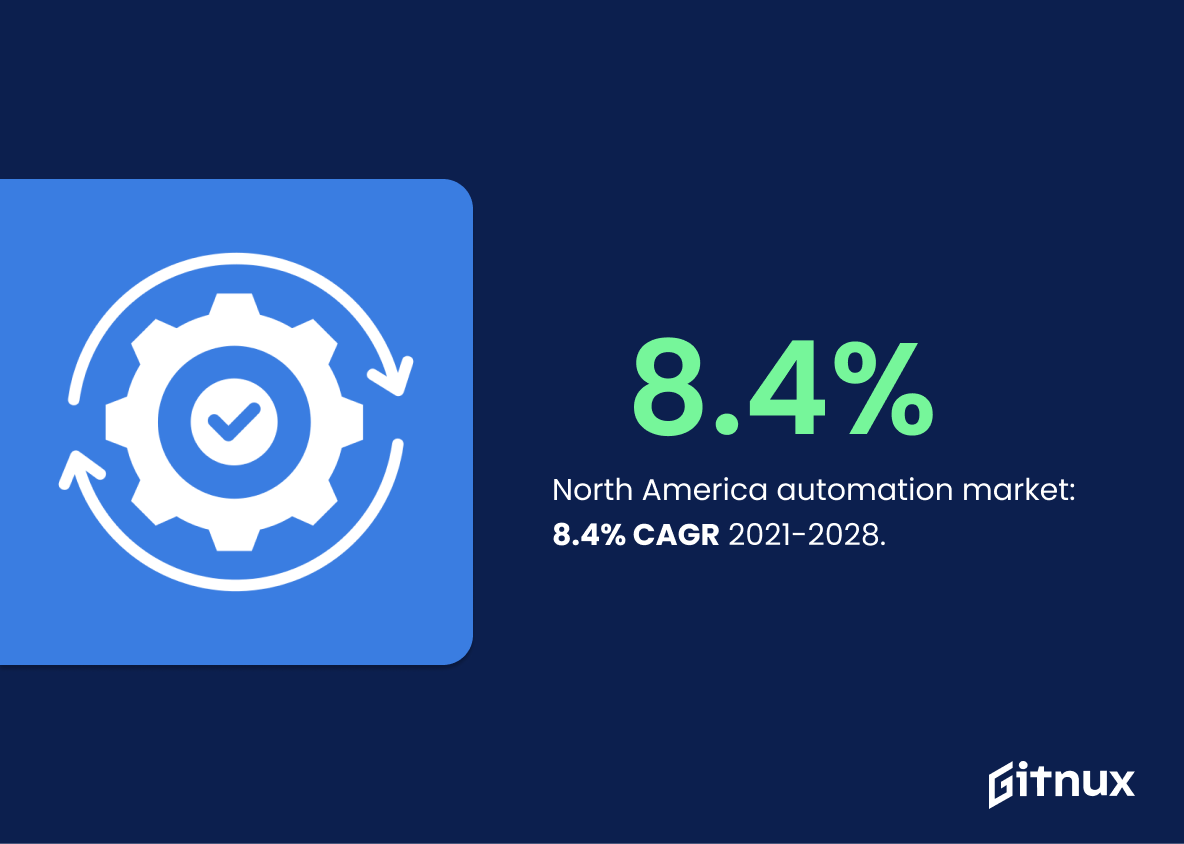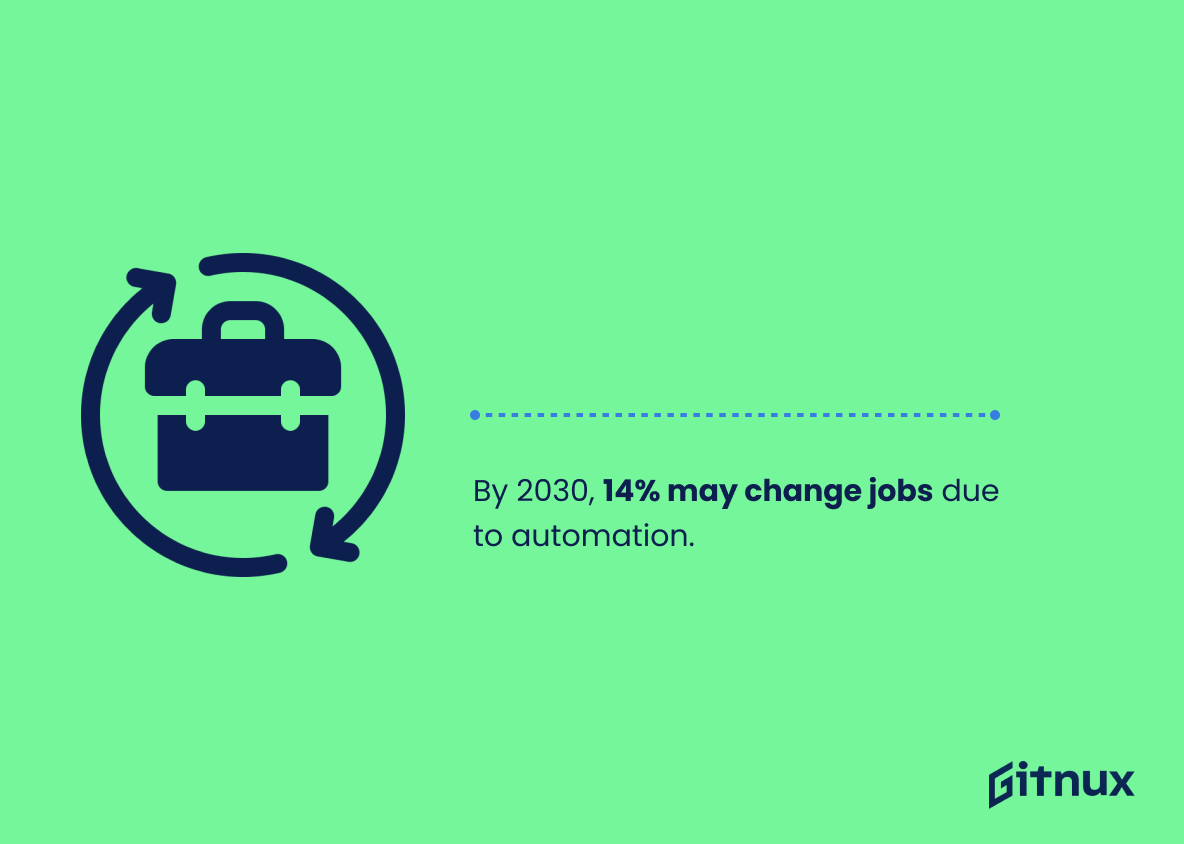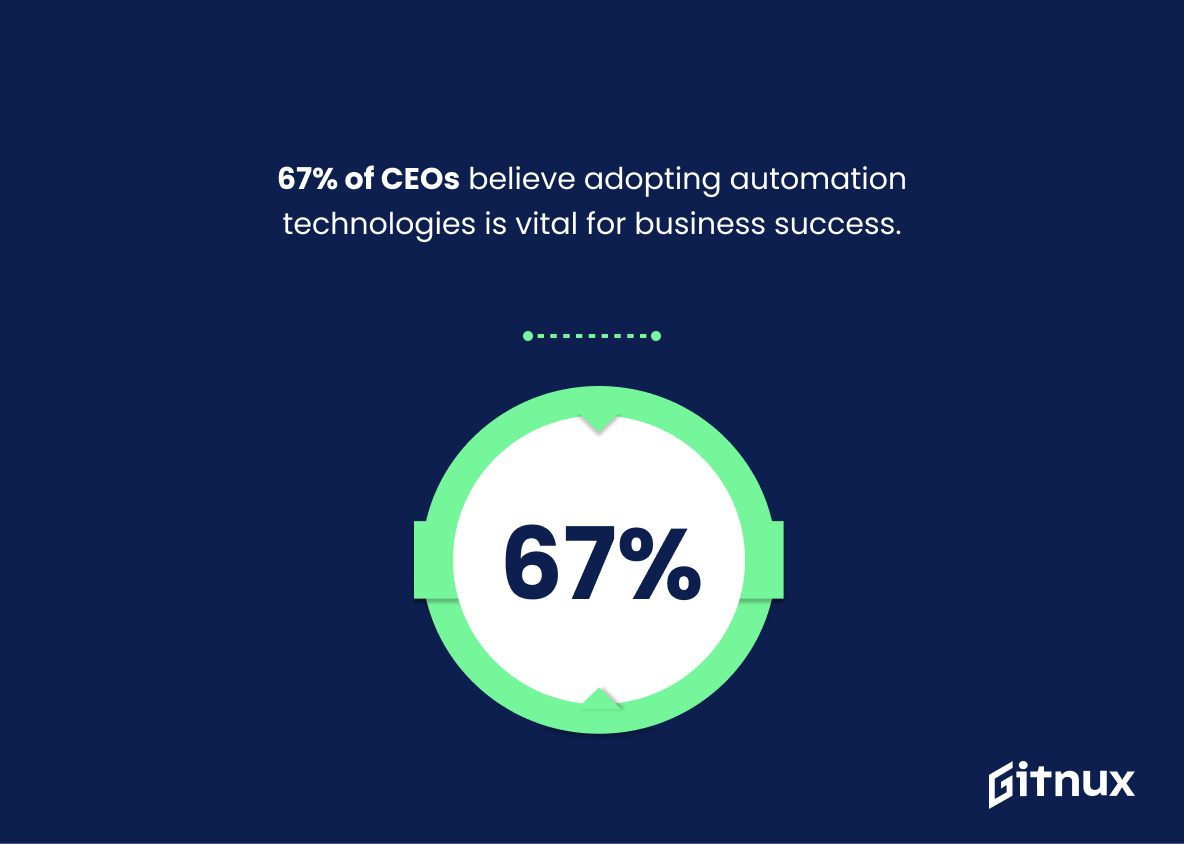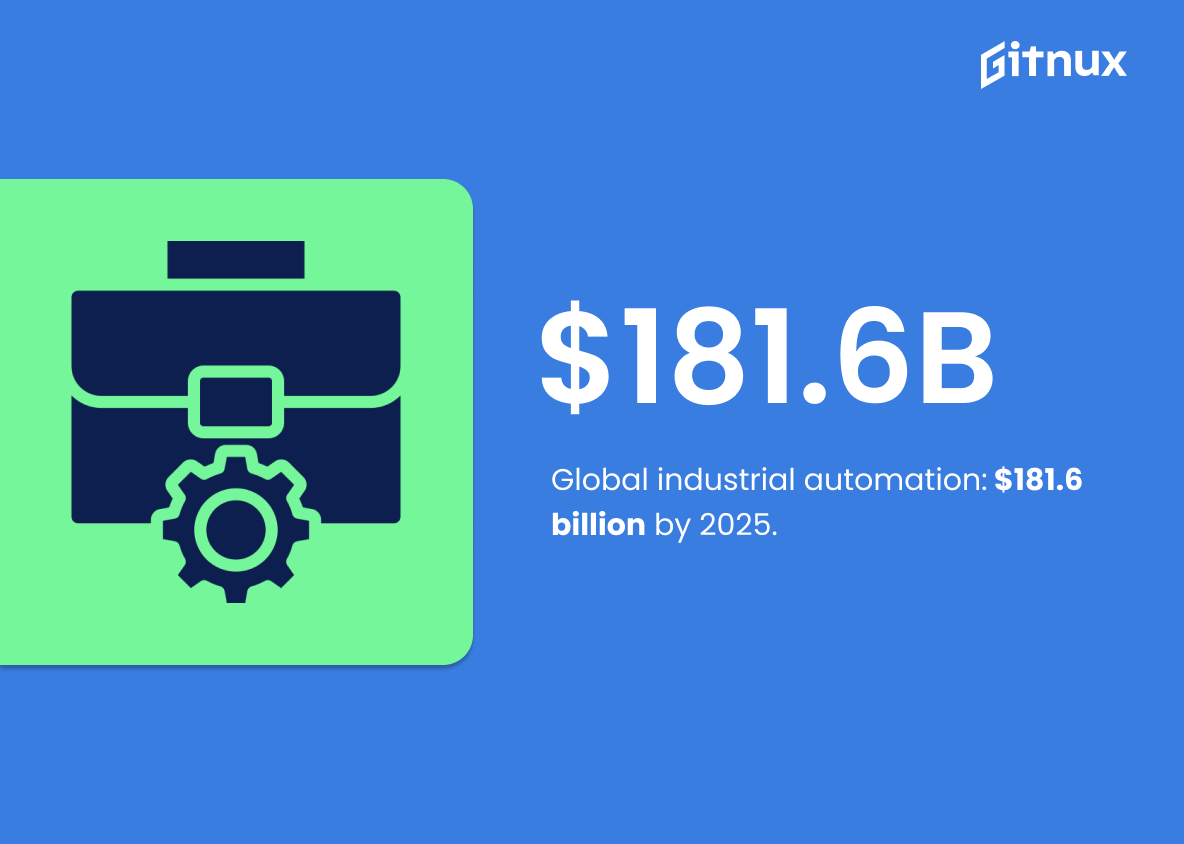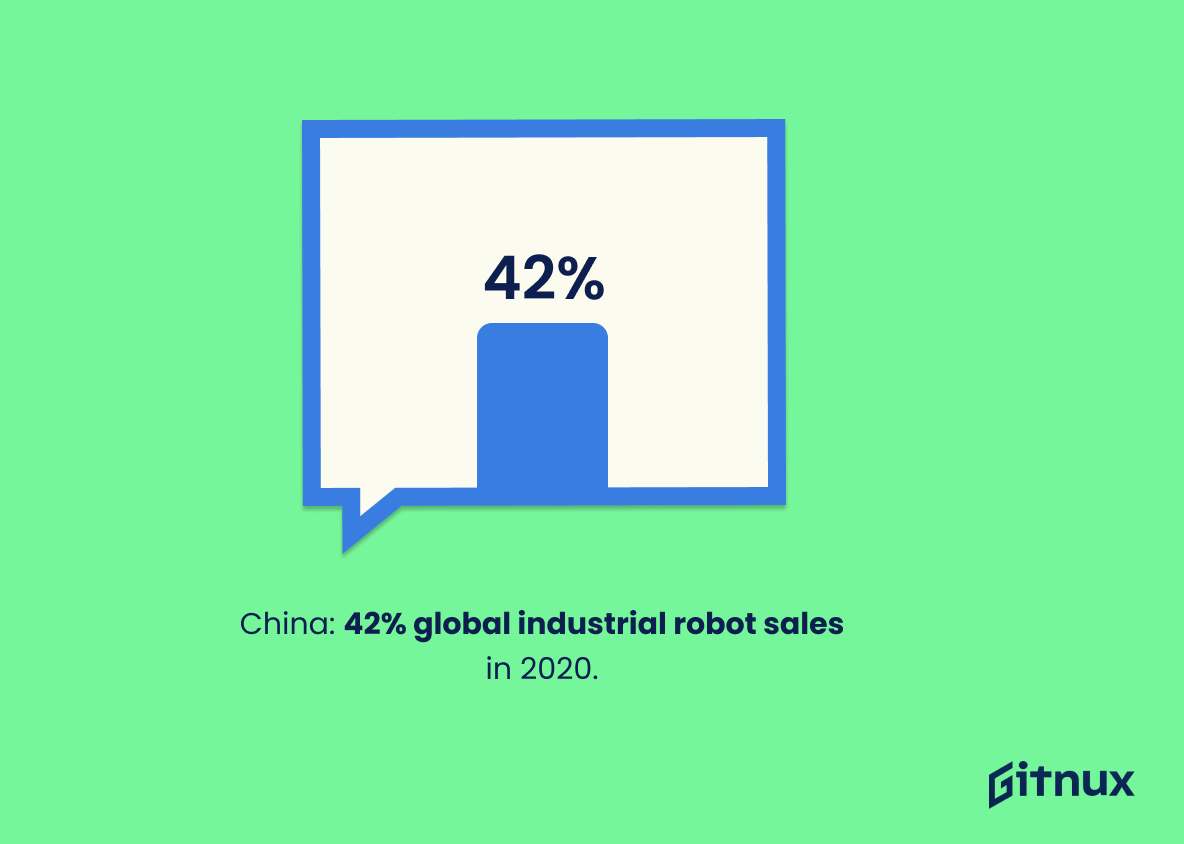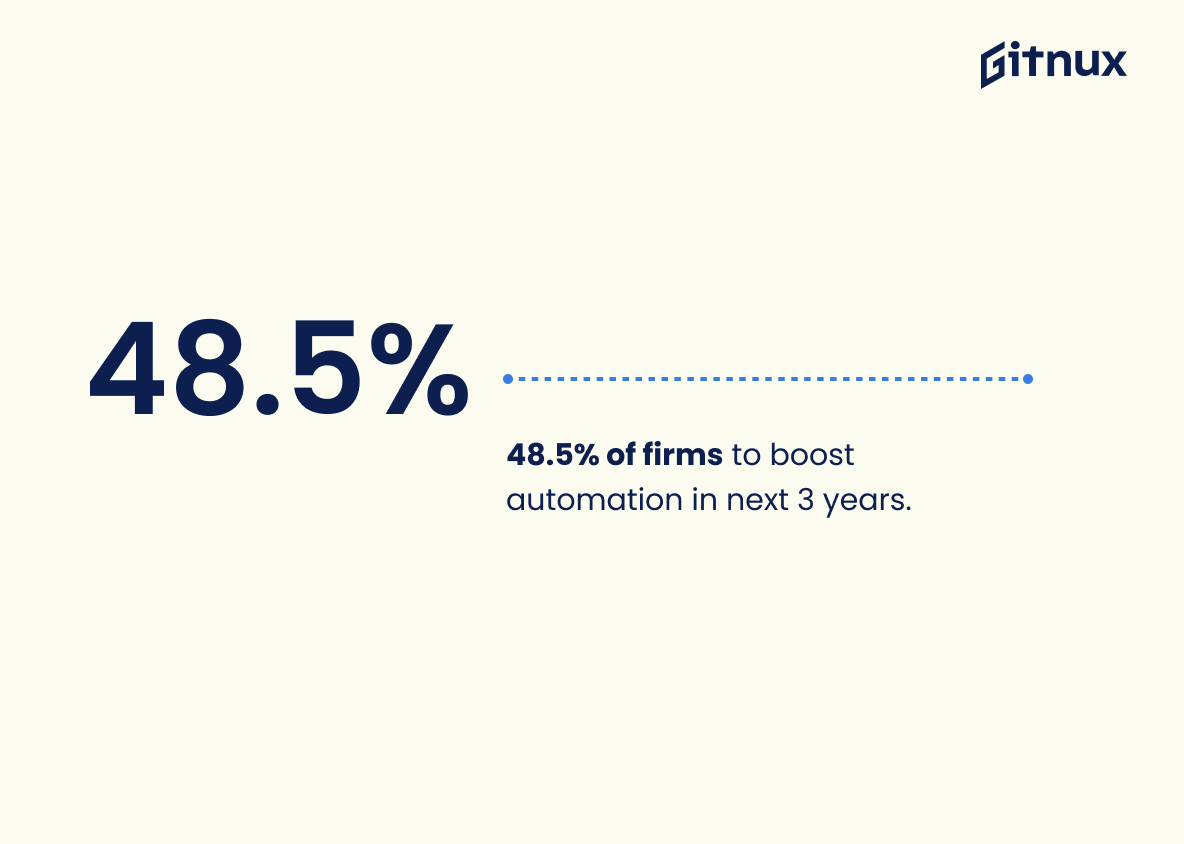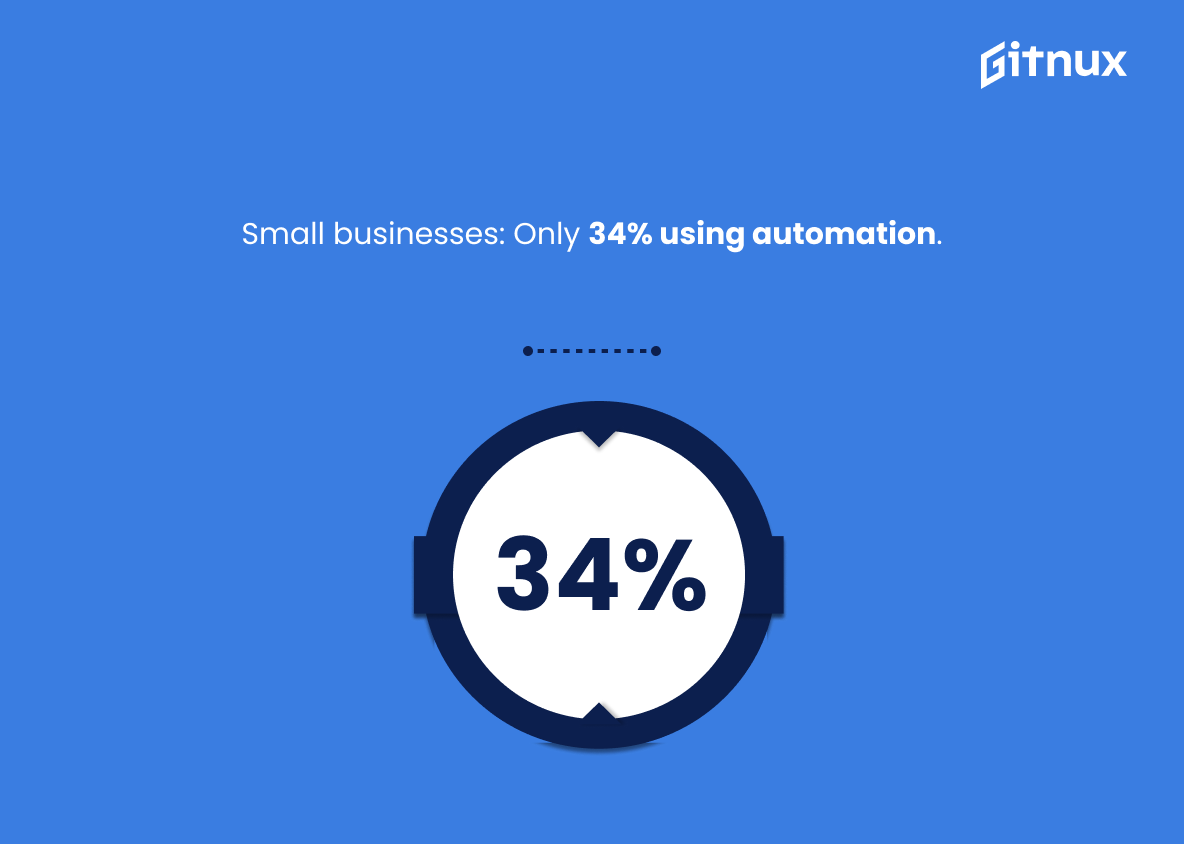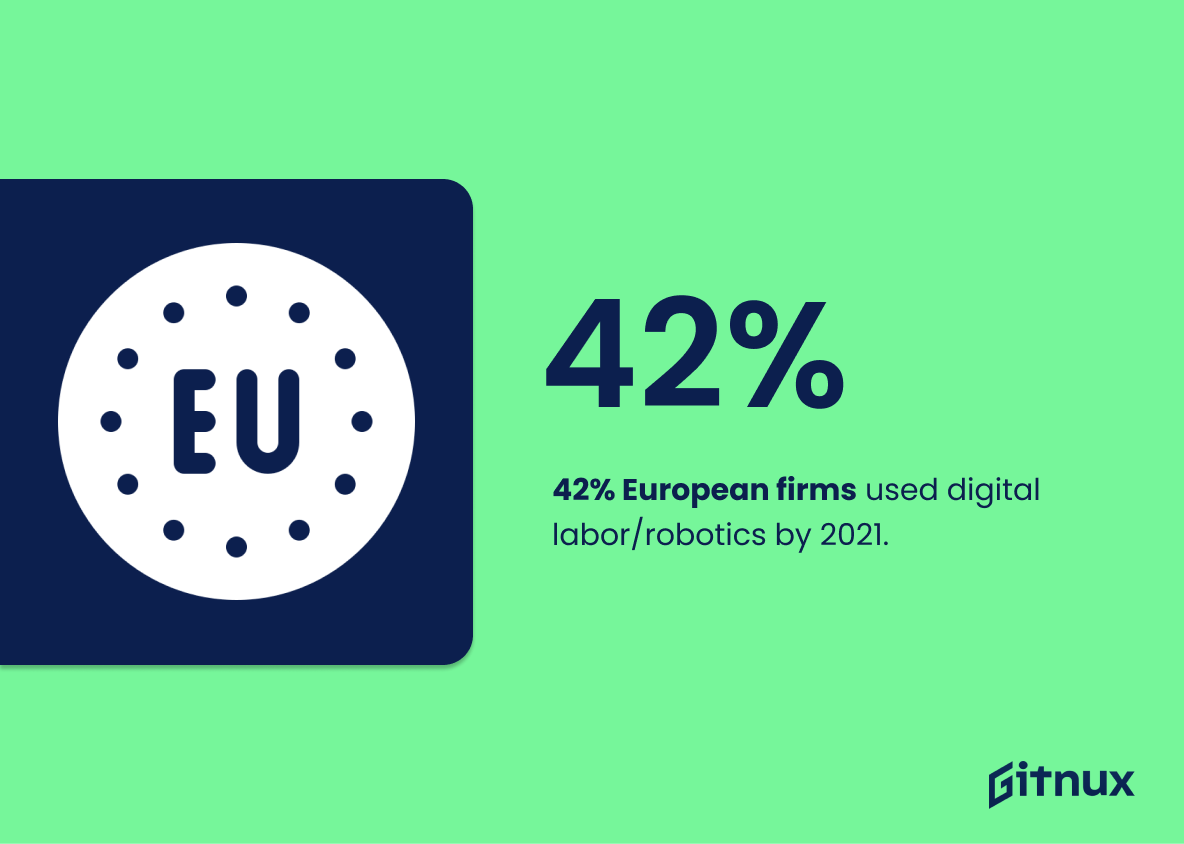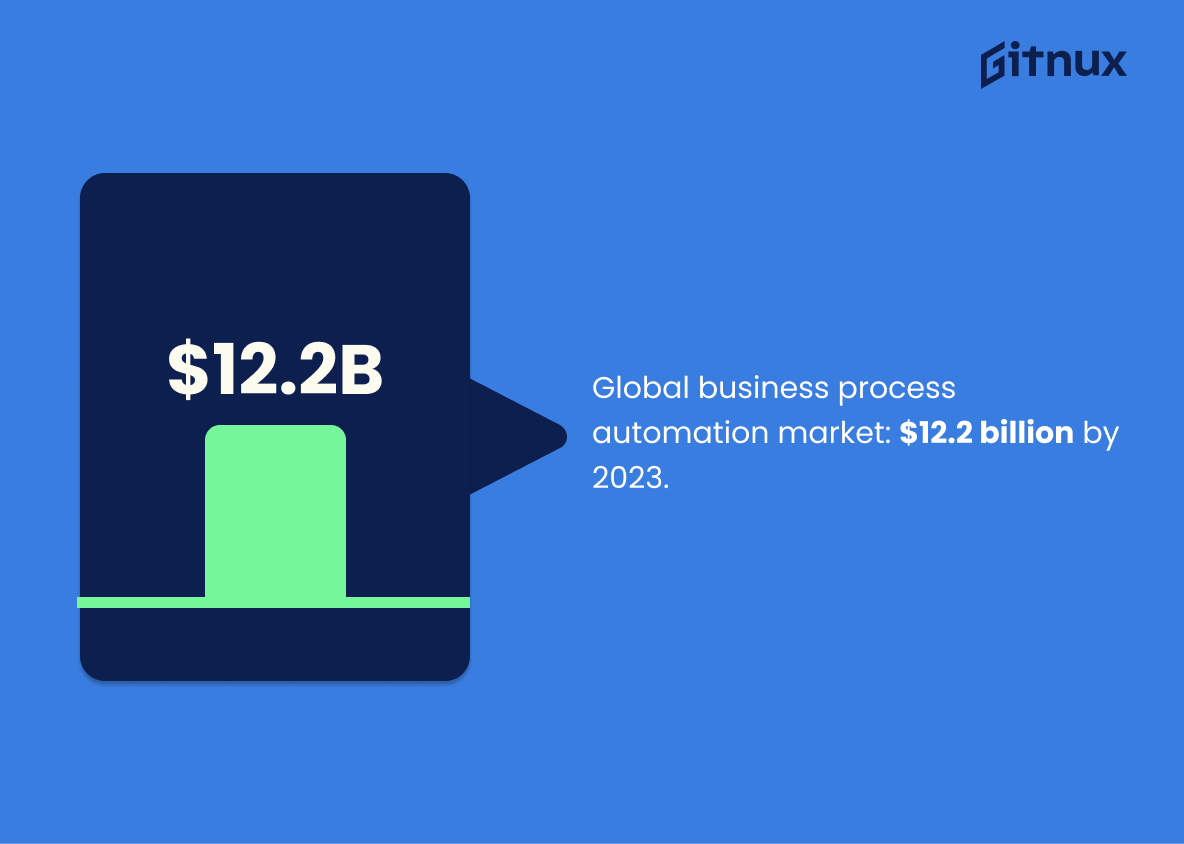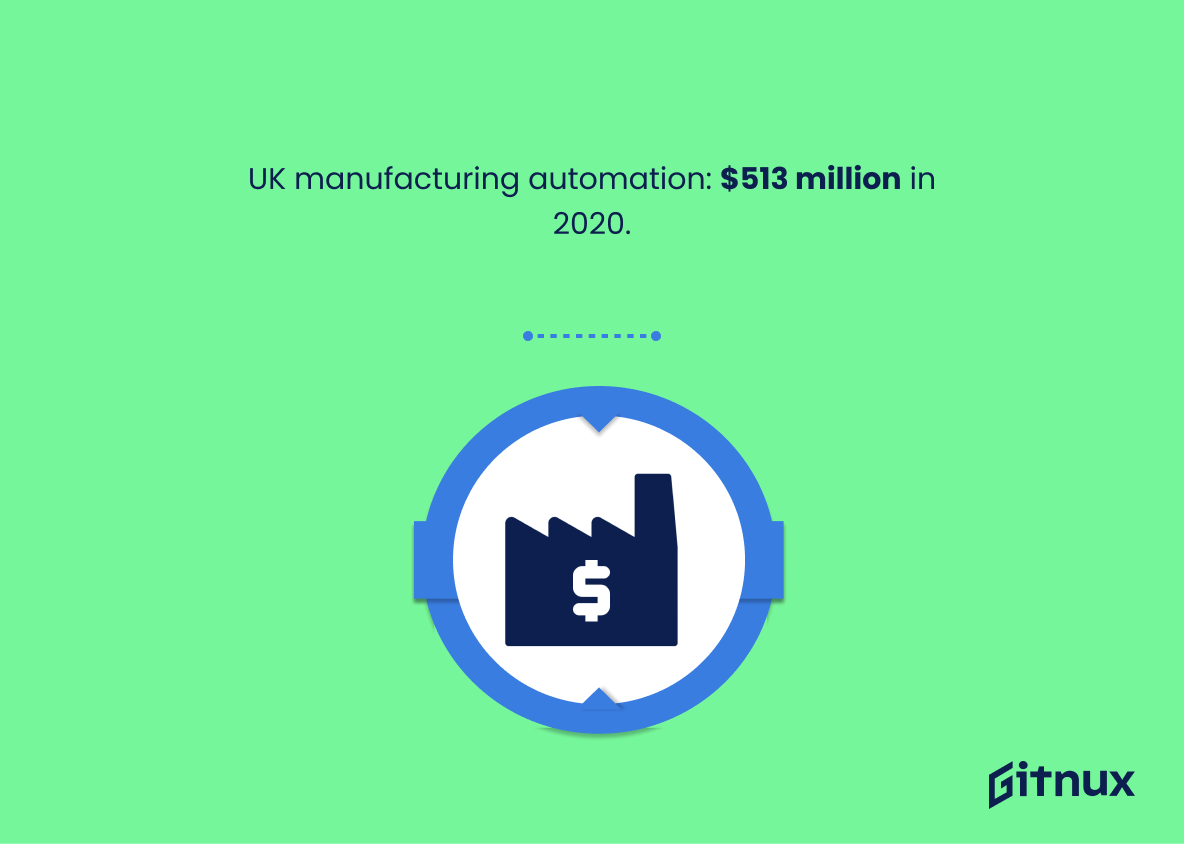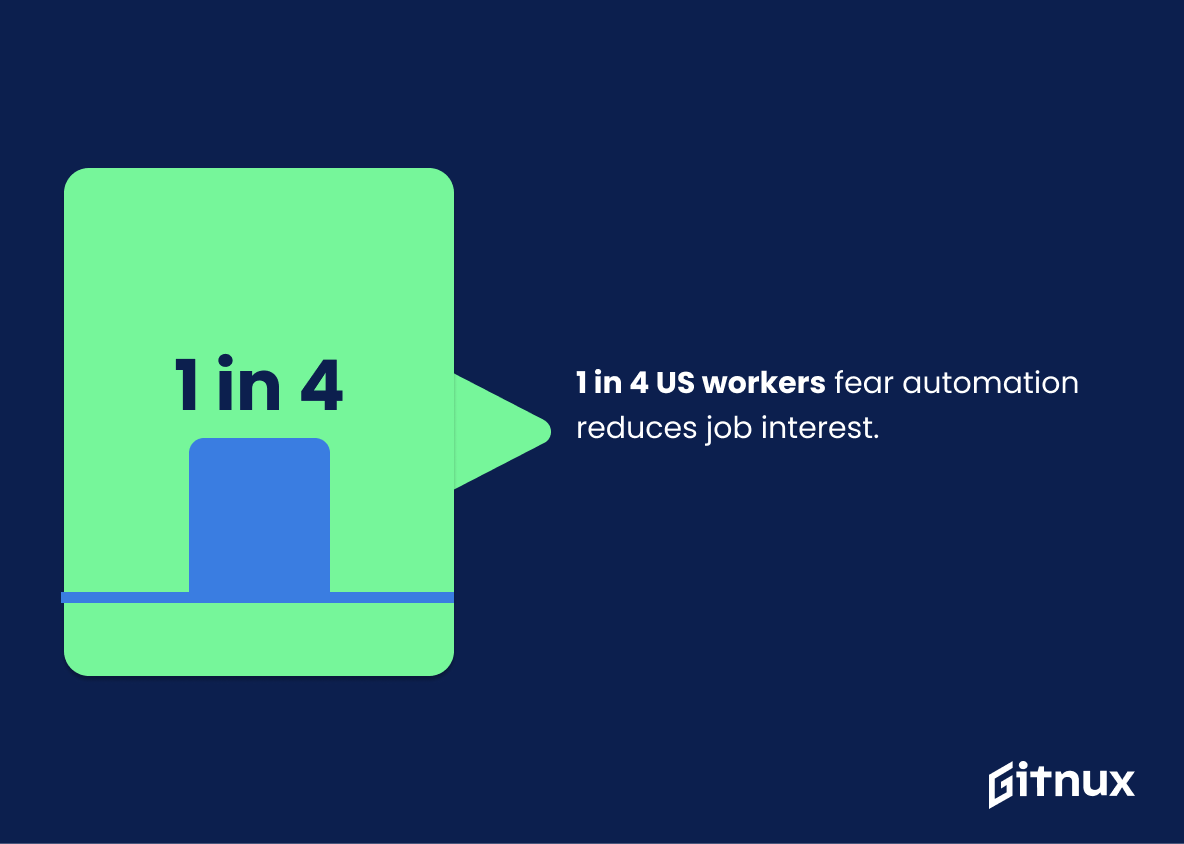The automation industry is rapidly growing, with the global market expected to reach $3.3 billion by 2022 and projected to hit $25.66 billion by 2025. North America’s automation market is estimated to grow at a CAGR of 8.4% from 2021-2028, while industrial automation systems are predicted to reach $181.6 billion globally in 2025 alone. Automation has the potential for both positive and negative impacts on businesses and workers alike; this blog post will explore some key statistics related to these effects as well as provide insight into how companies can best leverage automated technologies for success in today’s digital world
Automation Statistics Overview
The automation market in North America is estimated to grow at a CAGR of 8.4% from 2021 to 2028.
This statistic is a powerful indicator of the potential of the automation market in North America. It suggests that the market is set to experience significant growth over the next few years, providing a great opportunity for businesses to capitalize on the trend. This could be a great opportunity for businesses to invest in automation technology and reap the rewards of increased efficiency and cost savings.
By 2030, automation has the potential to displace 75 million jobs globally.
This statistic is a stark reminder of the potential impact automation could have on the global workforce. It highlights the need for governments and businesses to take proactive steps to ensure that the transition to automation is managed responsibly and that those affected by job displacement are supported. It also serves as a warning to those who may be complacent about the potential of automation to disrupt the job market.
By 2030, up to 14% of the global workforce may need to switch occupational categories due to automation.
This statistic is a stark reminder of the potential impact automation could have on the global workforce. It highlights the need for individuals to be prepared for the possibility of having to switch occupational categories in the near future. It also serves as a warning to employers to be aware of the potential disruption automation could cause to their workforce and to plan accordingly.
Industries with the highest level of automation are manufacturing at 39%, utilities at 37%, and sales at 31%.
This statistic is a powerful indicator of the prevalence of automation across different industries. It shows that automation is not just limited to manufacturing, but is also being used in utilities and sales. This highlights the fact that automation is becoming increasingly commonplace in many different sectors, and is having a significant impact on the way businesses operate.
67% of CEOs believe adopting automation technologies is vital for business success.
This statistic is a powerful indicator of the importance of automation technologies in the business world. It shows that the majority of CEOs recognize the value of automation and understand that it is essential for achieving success. This statistic is a strong argument for the use of automation technologies, and it can be used to support the points made in the blog post about automation statistics.
The global implementation of industrial automation systems is expected to reach $181.6 billion by 2025.
This statistic paints a vivid picture of the potential of industrial automation systems in the coming years. It shows that the implementation of these systems is expected to skyrocket, indicating that automation is becoming increasingly important in the global economy. This is an important point to consider when discussing automation statistics, as it highlights the growing importance of automation in the modern world.
China accounted for approximately 42% of total worldwide sales of industrial robots in 2020.
This statistic is a testament to the power of automation in China. It shows that the country is leading the way in the adoption of industrial robots, which is a major step forward in the automation revolution. This statistic is a clear indication that China is at the forefront of the automation revolution and is likely to remain so in the years to come.
48.5% of companies are planning to increase their reliance on automation over the next three years.
This statistic is a telling indication of the direction the automation industry is heading in. It shows that a significant portion of companies are recognizing the potential of automation and are actively investing in it. This is an important piece of information for anyone interested in the automation industry, as it provides insight into the current trends and future prospects of the sector.
About 1-in-4 U.S. workers believe automating their jobs would lead to work becoming less interesting.
This statistic is a telling indication of the impact automation has on the workforce. It suggests that a significant portion of the population is concerned about the potential for automation to make their jobs less engaging. This is an important factor to consider when discussing the implications of automation, as it highlights the potential for automation to reduce job satisfaction and morale.
Small businesses have been slower to adopt automation, with only 34% currently utilizing automation.
This statistic is a telling indication of the current state of automation adoption among small businesses. It highlights the fact that a majority of small businesses are yet to take advantage of the potential benefits of automation, such as increased efficiency and cost savings. This is an important point to consider when discussing the impact of automation on businesses, as it shows that there is still a lot of room for growth in the automation space.
About 42% of European companies have utilized digital labor or robotics to optimize processes by 2021.
This statistic is a telling indication of the growing prevalence of automation in Europe. It shows that a significant portion of companies have already adopted digital labor or robotics to streamline their processes, and this trend is likely to continue in the coming years. This highlights the importance of automation in the modern business landscape and the need for companies to stay ahead of the curve in order to remain competitive.
In the United States, up to 25% of jobs are at high risk of being replaced by automation.
This statistic serves as a stark reminder of the potential impact automation can have on the job market. It highlights the need for individuals to stay informed and up-to-date on the latest automation trends and technologies, as well as the need for businesses to consider the implications of automation on their workforce.
30.4% of U.S. businesses have limited experience in evaluating automation solutions.
This statistic is a telling indication of the need for more education and guidance when it comes to automation solutions. It suggests that a large portion of U.S. businesses are not well-equipped to make informed decisions about automation, which could lead to costly mistakes and missed opportunities. This highlights the importance of understanding the potential of automation and the need for businesses to seek out the right resources to help them make the most of automation.
The worldwide market for business process automation is predicted to reach $12.2 billion by 2023.
This statistic is a testament to the growing importance of business process automation. It shows that automation is becoming increasingly popular and is being adopted by more and more businesses. This is a clear indication that automation is becoming an essential part of the modern business landscape, and that companies are recognizing the potential benefits of automation. As such, this statistic is a valuable insight into the current state of automation and its future prospects.
The United Kingdom’s manufacturing sector increased its use of industrial automation to $513 million in 2020.
This statistic is a testament to the growing importance of industrial automation in the United Kingdom’s manufacturing sector. It shows that the sector is investing in automation to increase efficiency and productivity, which is essential for staying competitive in the global market. This statistic is a clear indication that automation is becoming an increasingly important part of the UK’s manufacturing industry.
Between 2020 and 2025, the warehouse automation market is expected to grow at a CAGR of 11.7%.
This statistic is a clear indication of the potential of the warehouse automation market in the coming years. It shows that the market is expected to experience significant growth, which could lead to more businesses investing in automation technology and taking advantage of its many benefits. This could have a positive impact on the industry as a whole, as automation can help to reduce costs, increase efficiency, and improve customer service. As such, this statistic is an important one to consider when discussing automation statistics.
Conclusion
The statistics presented in this blog post demonstrate the rapid growth of automation across a variety of industries and regions. The global market for Robotic Process Automation (RPA) is projected to reach $25.66 billion by 2025, while the worldwide implementation of industrial automation systems is expected to reach $181.6 billion by 2025. Additionally, up to 14% of the global workforce may need to switch occupational categories due to automation by 2030, with manufacturing having one of the highest levels at 39%. It’s clear that businesses are increasingly turning towards automated solutions as they look for ways to lower costs and increase efficiency – 67% CEOs believe adopting these technologies is vital for success – but there are still challenges ahead when it comes implementing them effectively and ensuring workers have access retraining opportunities if their jobs become obsolete or redundant due to increased use of robots or AI-driven technology.
References
0. – https://www.typeform.com
1. – https://www.mordorintelligence.com
2. – https://www.weforum.org
3. – https://www.pewresearch.org
4. – https://www.statista.com
5. – https://www.fortunebusinessinsights.com
6. – https://www.grandviewresearch.com
7. – https://www.ifr.org
8. – https://www..deloitte.com
9. – https://www.salesforce.com
10. – https://www.samsungknox.com
11. – https://www.brookings.edu
12. – https://www.mckinsey.com
13. – https://www.marketsandmarkets.com
ZipDo, cited June 2023: Automation Statistics
